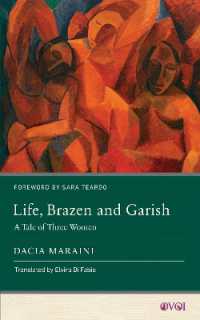Full Description
Acting Chinese is a year-long course that, together with the companion website, integrates language learning with the acquisition of cultural knowledge, and treats culture as an integral part of human behavior and communication. Using modern day examples of Chinese discourse and behavioral culture, it trains students to perform in culturally appropriate fashion, whilst developing a systematic awareness and knowledge about Chinese philosophy, values and belief systems that will prepare them for further advanced study of Chinese language and culture. Each lesson contains simulated real-life communication scenarios that aim to provide a concrete opportunity to see how native speakers generally communicate or behave in social situations. An essential guide for intermediate to advanced level second language learners, Acting Chinese provides a unique and modern approach to the acquisition of both cultural knowledge and language proficiency.
Contents
PrefaceTeacher's guide List of abbreviations and symbolsList of characters in communication scenariosUnit one Cultural perspective: group mentality Lesson oneText: Behavior highlighted: love to be part of the fun Lesson two Text: Behavior highlighted: follow the pack Lesson three Text: " "Behavior highlighted: relation-based conduct Unit twoCultural perspective: the concept of li Lesson fourText: Behavior highlighted: li-based civilities Lesson fiveText: ?Behavior highlighted: humble oneself and exalt others Unit threeCultural perspective: harmony orientation Lesson sixText: , Behavior highlighted: harmony as priority Lesson sevenText: Behavior highlighted: forbear and forgive Lesson eightText: Behavior highlighted: (take) the middle road Unit fourCultural perspective: face psychology Lesson nineText: ?? Behavior highlighted: saving face Lesson ten Text: Behavior highlighted: face work Unit fiveCultural perspective: rules of renqing Lesson elevenText: Behavior highlighted: reciprocation Lesson twelveText: Behavior highlighted: networking Unit sixCultural perspective: differentiated mode of association Lesson thirteenText: ( )Behavior highlighted: distinguish people based on relationships Lesson fourteenText: ( )Behavior highlighted: distinction between the upper and lower status Appendixes: reflection worksheet for cultural exploration Traditional Chinese character texts IndexesPinyin-English vocabularyEnglish-Chinese vocabularySpeech pattern index by lesson







